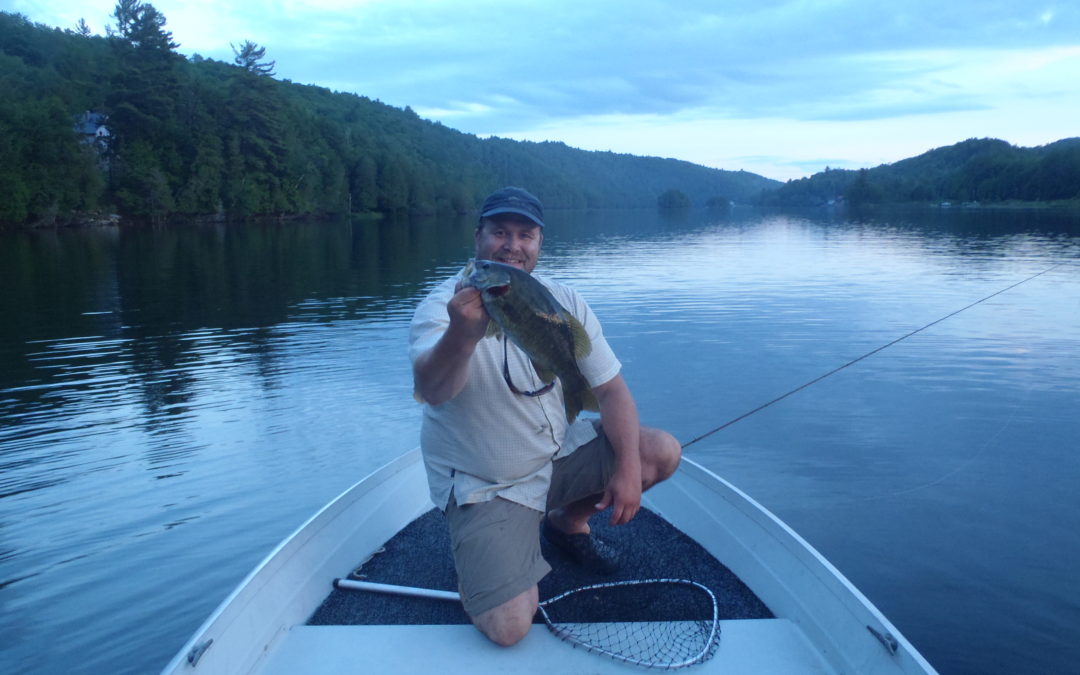At one time or another we have all come to the reality that fishing a hatch and successfully fishing a hatch can be two very different things. Here are a few steps to help you be successful in fly fishing the Hex Hatch.
Step one… Find the bugs. First and foremost you need a body of water that not only has a hex hatch but has a prolific hatch. Local knowledge or a stop at the nearest fly shop is a great way to begin your search. Also, examine what is washing up on the shorelines. If the hatch is going off you should be able to find some spent nymph shucks (exoskeletons) along the shorelines.
Step two… Learn the nature of the bugs. Here in the northeast the Hex hatch primarily takes place on lakes and ponds. The Hex is a burrowing nymph and prefers a sandy or silty type bottom usually in 15′ of water or less. Large areas like this in close proximity to deep water or with a rapid drop off to deep water are generally prime locations.
Step three… Rigging and working the water column. As the afternoon sun approaches the horizon, larger fish will begin to transition from the deeper water into “Hex land” for the evening feed. At this time the fish will key in on the nymphs and early emergers. Two good rigs for the pre-hatch bite: fish a sinking line over the deep to shallow water transition area and slowly retrieve a Hex nymph pattern, or, with a floating line, rig an indicator to suspend a nymph roughly two feet off the bottom, again in that transition area and after allowing the fly ample time to sink to depth, begin a slow retrieve with several second intervals between strips. As darkness approaches, the shallow water should begin to come to life with insects “hexes” now on the surface and rising fish. To fish the dry fly, you will want a short stout leader. A seven and a half foot 3x tapered leader should do. The dry fly is really big and wind resistant. The short leader will help to turn the fly over and the heavier tippet will help keep the leader from twisting into a gnarly mess while casting. I will generally have a couple rods rigged with dries, as not to have to re tie in the dark after a tangle or break off. Any version of a Hex cripple or dry should do the trick.
Step four… Selecting a target. As the fish are actively feeding on the surface, you can often identify a feeding pattern in the rises of a particular fish. If you can land the fly ahead of the fish directly in the line of travel, game on! You can also blind cast. There will usually be a large number of fish patrolling these areas for bugs, so blind casting can also be effective. Cast, then every now and again move the fly gently on the surface. Believe me, the fish will find it if it is on the water. If you are picking up and casting constantly at random near by rises, your odds of success will drop.
Step five… Closing the deal. Surface bites are often gentle slow motion sips. It is best to hesitate for a brief moment before setting the hook to ensure the fish has taken it. After hooking up, keep them tight, let them run when they want to run, and try to steer them clear of known shallow water obstacles, such as docks, weeds, logs and rocks. Be sure to have a headlamp and a net handy to land and release your catch.
Step six… If all else fails, just give me a call and book a trip! Josh


